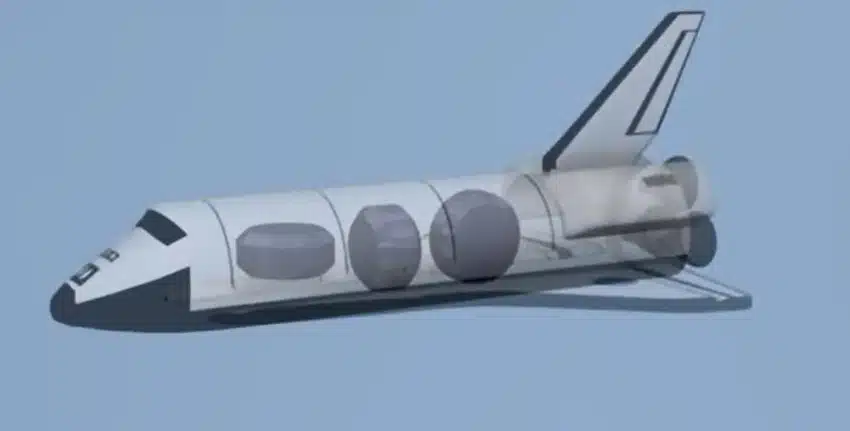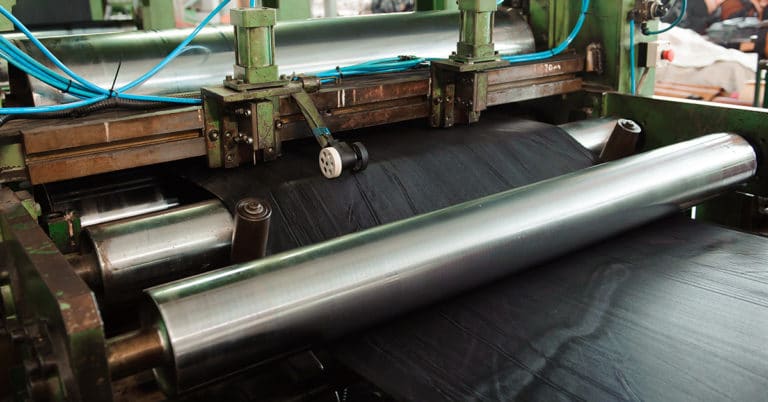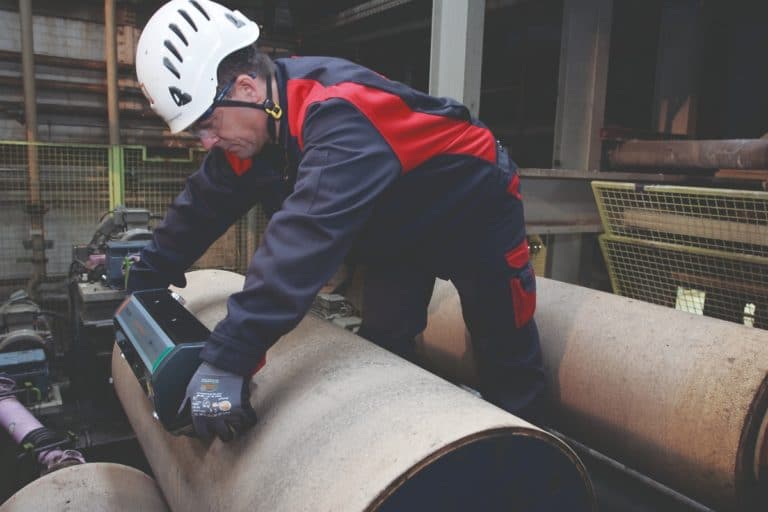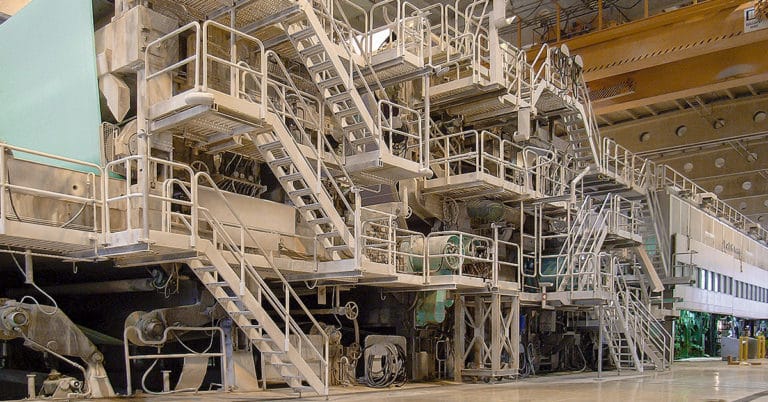
Only 38 ParAlign roll alignment systems exist worldwide. The critical component of Fluke Reliability’s Peak Roll and Geometrical Alignment (RGA) service features military-grade technology also used in the space shuttle.
Each ParAlign device contains three ring laser gyroscopes, which work together at the speed of light to measure the parallelism of rolls in production facilities for paper, blown film, metals, corrugated materials, and more. This gyroscope technology is also used in aerospace navigation systems, including NASA’s space shuttle program.
As a laser roll alignment system, the ParAlign works faster and achieves more precise results than other methods.
The ParAlign’s three internal gyroscopes shoot laser beams in opposite directions at precisely the same time. As the sensor is moved, one laser beam hits the detector sooner than the other. The ParAlign measures that difference in time.
It calculates the rotational axis of a roll and any offset in relation to a chosen reference roll. When rolls are precisely positioned parallel to one another, machine availability, productivity, and product quality are improved. Roll alignment is essential when machines are close together or running at high speeds.
The ring laser gyroscopes of the ParAlign are positioned along three dimensions in space (X, Y, and Z) and keep their rotation axis unchanged even when their base is shifted. This is how the angle of inclination along the rotational axis is determined. Using roll, pitch, and yaw, the ParAlign can identify its relative position in space at any time, ensuring accurate and reproducible results.
The Peak RGA service from Fluke Reliability features the ParAlign working in combination with laser trackers. Your company can benefit from this technology without anyone needing to become an actual rocket scientist.
But why are there so few ParAlign systems?
Why gyroscope technology is exclusive
Ring laser gyroscopes are highly restricted—and the more accurate a gyroscope is, the more restricted it is.
Anyone who buys a ring laser gyroscope could build a laser-guided missile or resell it to a foreign country. So, individuals and companies are linked to the gyroscopes they have and use. Each one is tracked via a serial number and each one has different restrictions. For example, some ring laser gyroscopes are allowed into certain countries, while others are prohibited.
Because of these intricacies—and because of the high price tag per gyroscope—competitors offering roll alignment services have not deployed a system that uses ring laser gyroscopes. The ParAlign, indeed, is one of a kind.
Decades ago, Prüftechnik founder Dieter Busch pioneered using ring laser gyroscopes for measuring the parallelism of rolls. When he was at a paper mill doing testing in the 1980s, he decided there must be a better way to measure roll alignment than the tools used at the time. He began to explore gyroscopes as a solution because he felt a laser device would be ideal for the purpose.
Busch and some of his Prüftechnik colleagues did several years of math and testing to determine if gyroscopes would be accurate enough to perform the measurements. They found that it would be a viable solution and proceeded to obtain the government and other permissions necessary to purchase gyroscopes. This process alone took several more years.
How the ParAlign differs from other roll alignment systems

One of the most significant benefits of the ParAlign measurement system is that, unlike optical measurement systems, it does not require line of sight to perform measurements. Even if a roll is obstructed, it can be measured quickly and easily.
Other devices must essentially be able to see where they were and where they will be moved to. Frequent moving and resetting to capture that line of sight triggers and compounds potential errors. The more a device is moved and reset, the more an error is likely to compound.
But the ParAlign can move freely, and it is accurate from any distance, elevation, or location—from inches away to several football fields away.
Because it doesn’t require line of sight, the ParAlign also doesn’t require sequential measuring in the same way that other technologies do. If it’s easiest to go from Point A to Point K to Point Z and then back to Point B, the ParAlign can do that. Other devices cannot.
What industries benefit from using ParAlign?
It is not uncommon for steel processing facilities to have rolls in hard-to-access areas, such as 12 stories up in the air or in basements. With other measurement systems, it might take days of measurements to reach rolls 12 stories high. Some rolls may be impossible to measure at all.
The ParAlign doesn’t have those limitations. And it takes just 30 to 60 seconds to measure a roll and get the data, which is wirelessly transmitted to a laptop. The software outputs information in clear graphics, so there is no need to do math or analysis on the spot. Clean, clear reports appear immediately.
Roll surface wear can be an issue in metal production, particularly if rolls aren’t correctly aligned. It can mean that some areas wear down faster than others.
Steel, as it’s running through a machine, wants to track off-center when rolls are not aligned. That can have catastrophic results. Proper alignment is both a quality and a safety concern for the metals industry.
Overall, roll misalignment negatively impacts product quality, causes increased waste, and leads to unscheduled downtime. Unplanned downtime is expensive in most industries (for example, unplanned downtime in the automotive industry can cost up to $3 million per hour).
Making the most of your planned downtime for maintenance is especially critical for the paper industry, where machines are typically run 24/7 for six, eight, or even 10 weeks. When downtime is scheduled, companies must ensure they take advantage of it. Any unplanned interruption or shutdown during a paper production cycle is likely a disaster.
On the other hand, in the blown film industry, production cycles are shorter—often only four to six hours—and machines are down more often. Plastic qualities are changed regularly. The biggest pain point for the blown film industry is typically the sheer number of machines requiring alignment.
With its speed, the ParAlign can measure 100 to 200 rolls per day, depending on the industry. It can do in one weekend what a different device may take multiple weekends to accomplish.
If a corrugated facility has to devote two weekends to downtime, then the week in between leads to scrap production and waste material. Other downsides of repeated follow-ups include not just the time required but also the risk of inconsistencies.
Summary
Roll misalignment helps manufacturers ensure high machine availability and high product quality. When rolls are correctly aligned, faults such as asymmetries and paper breaks are eliminated, and parts do not wear prematurely.
The ParAlign measurement system is accurate to a resolution of 4 μm/m (0.05 mils/ft). This highly precise and specialized technology helps companies quickly ensure their rolls’ parallelism—to ensure the consistency of their machine performance and their products.
For more details on the ParAlign technology and Peak RGA service, view the datasheet on this page.






